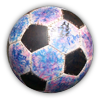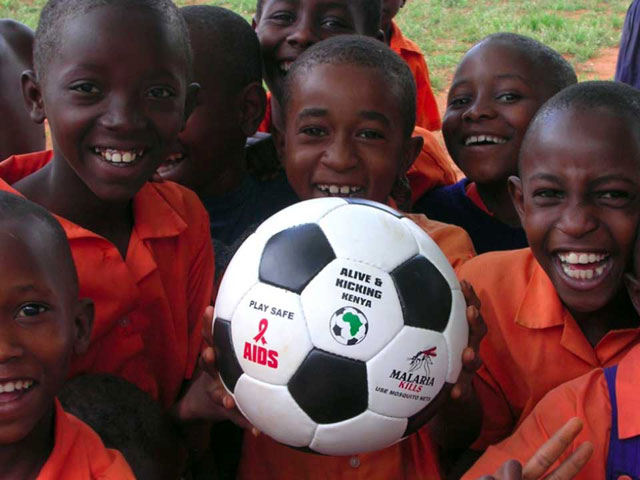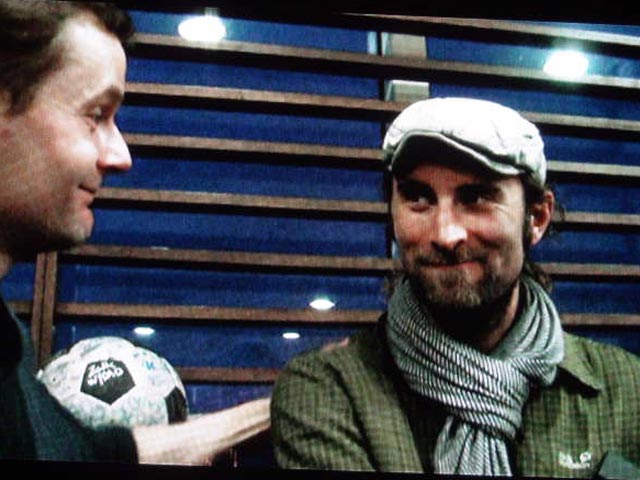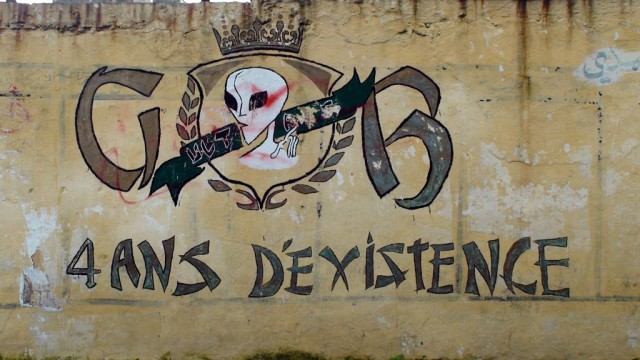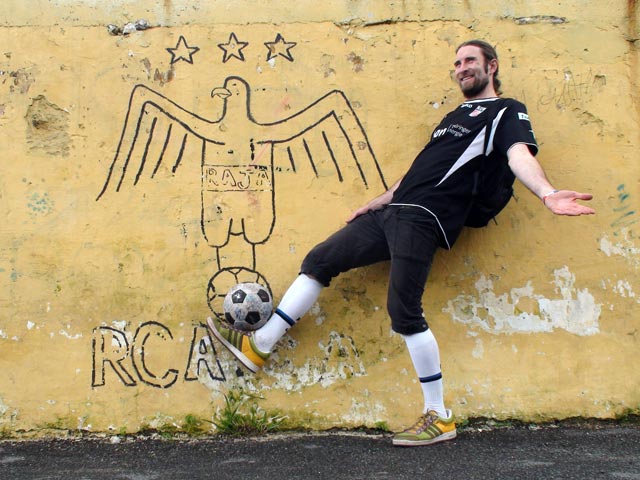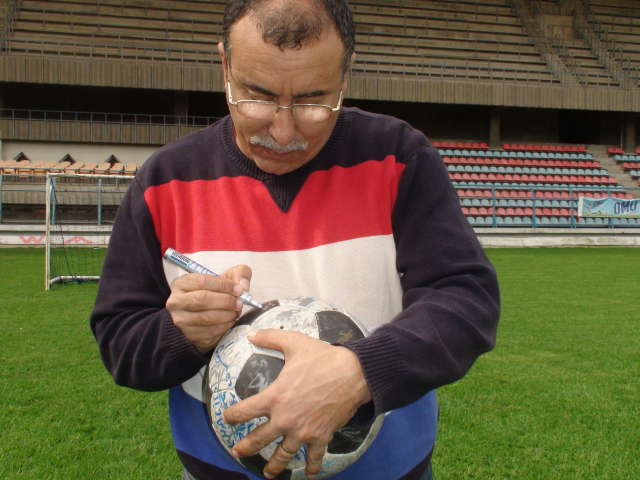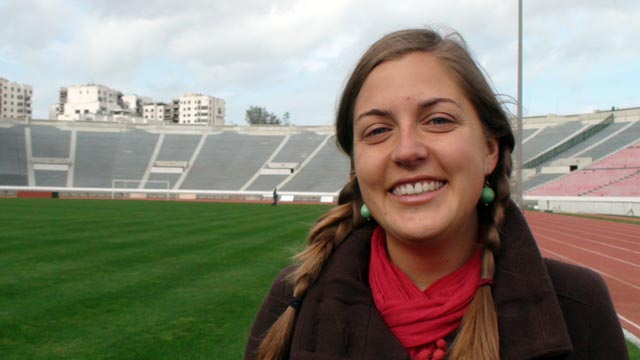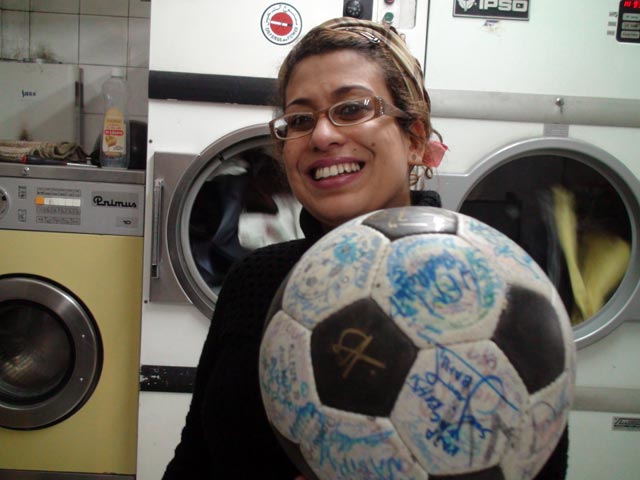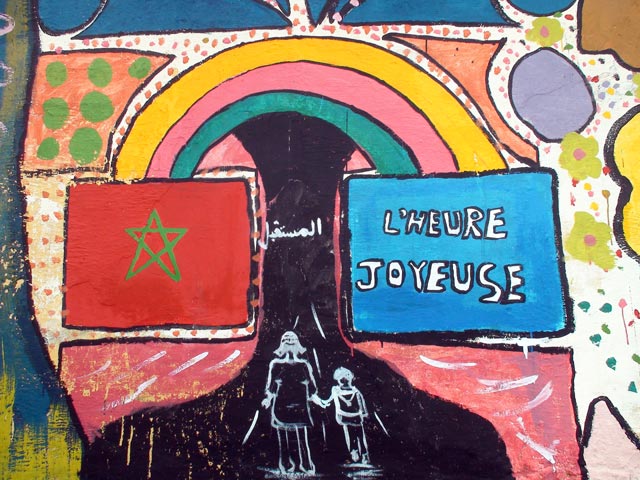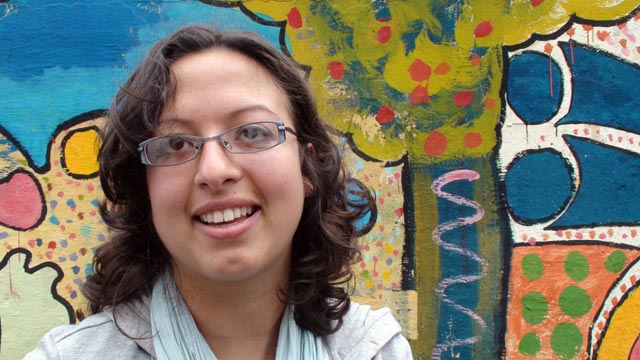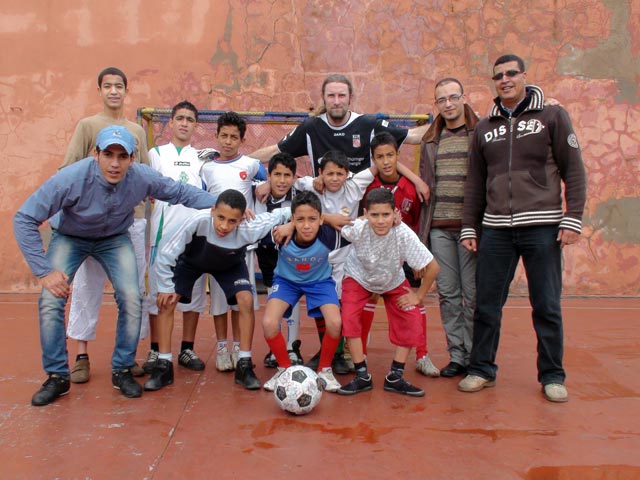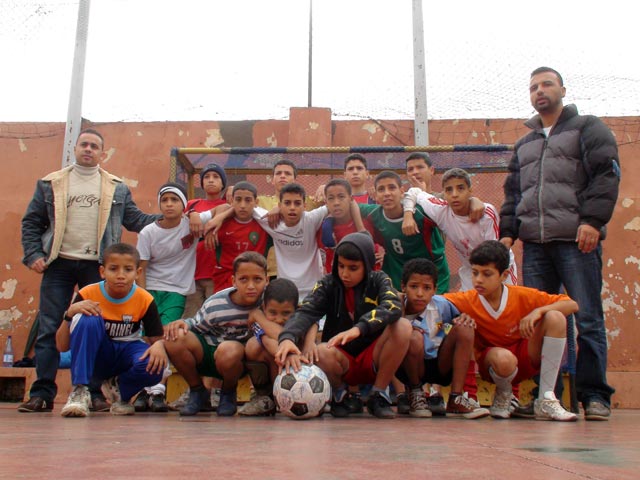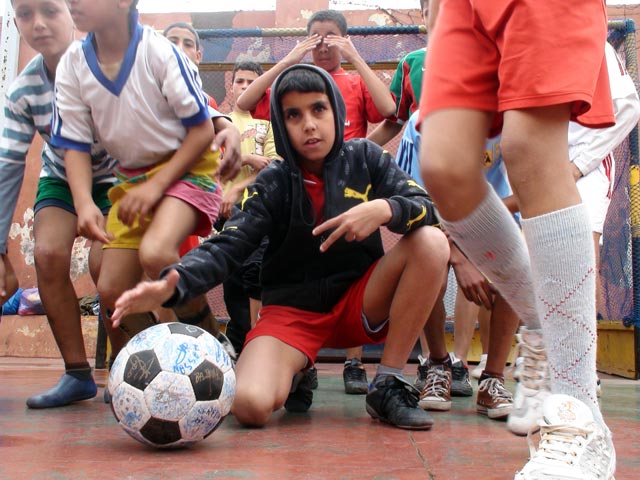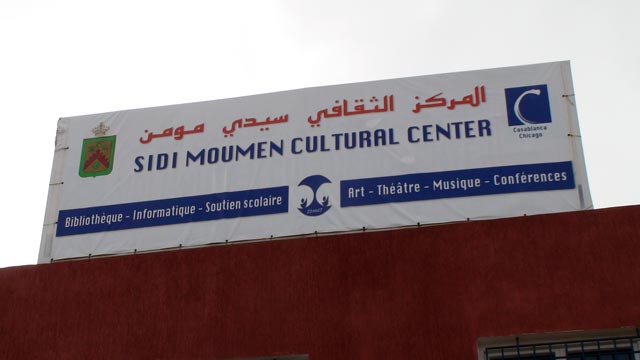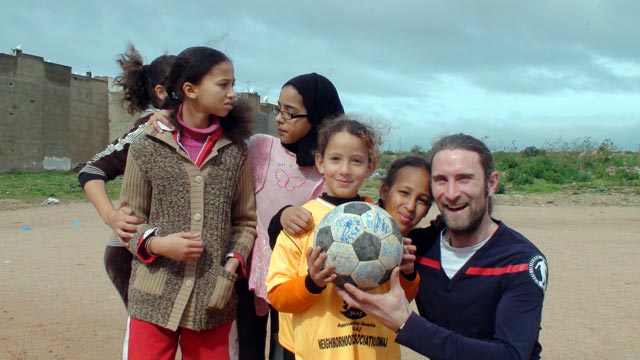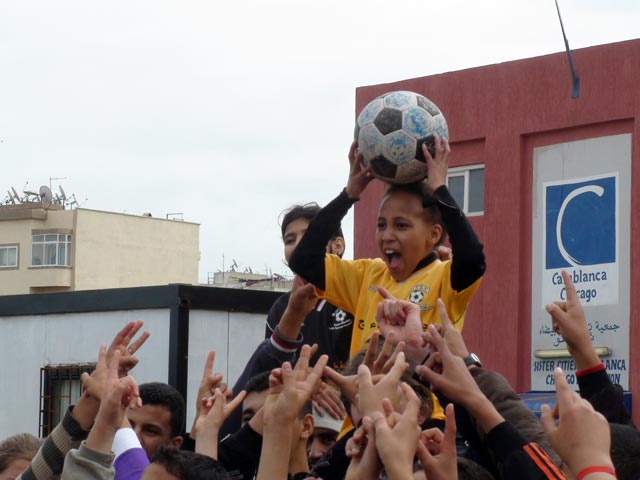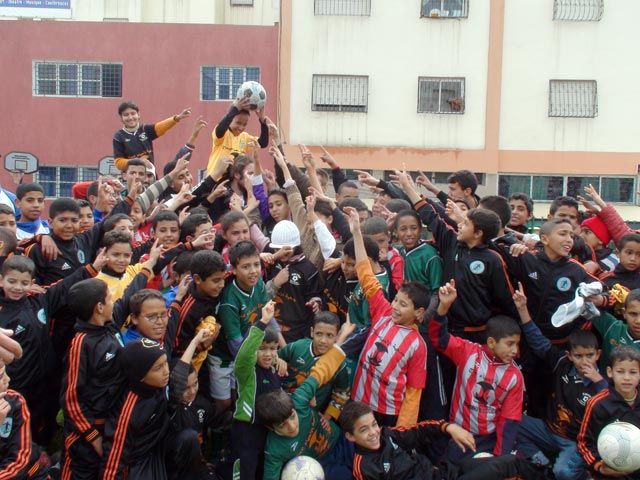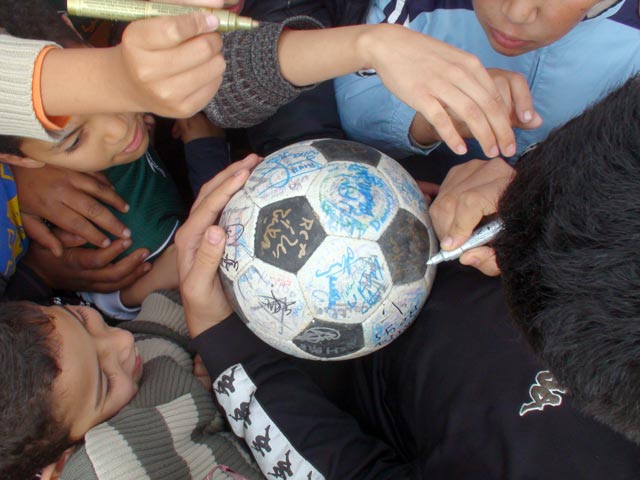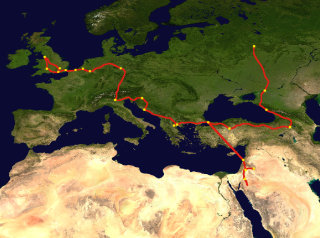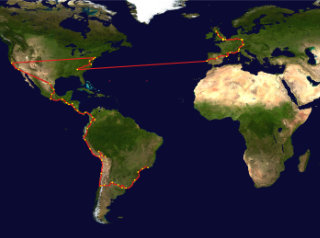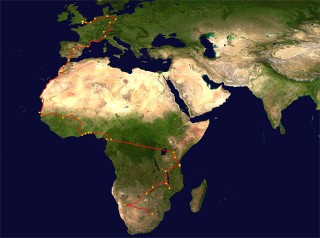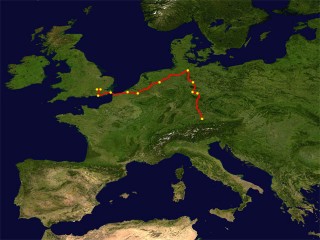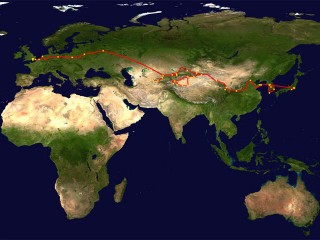I made it. I’m on the trip.
I’m running on empty after three quarters of an hour of sleep due to mad final night-time preparations. But I’m absolutely on The Ball and so pleased to meet up with Andrew and be reunited in Casablanca. All preparations taken care of.
Medical kit: Sorted.
Endless electronics: taken care of.
Sad farewell: behind me.
Senegal here we come.
In “Casa”, you can’t help but realise the significant role football plays in Casablancan life. The colours one chooses to wear on the streets need to be carefully thought through.
Red for Wydad — green for Raja.
Wydad was founded in 1937. Raja a few years later by one of the members of Wydad in a break away. Legend has it that he told Wydad officials: “this team is going to bother you for the rest of your life.”
He was right.
“We at Wydad call Raja our sons”, said former Wydad and Moroccan football legend (89 caps for Morocco) Abdelmajid Shaita.
“Could you imagine having played for Raja?”, Andrew asked.
“I cannot bear to even say the name of that club.”
These days you see players transferring from one club to a bitter rival. Michael Owen recently signed for Manchester United after being a Liverpool star, for example.
“Could that happen in Casablanca?”
“No, not here. It would be impossible. The public would not accept this.”
Abdelmajid spoke about a fantastic player that Wydad had several years ago. He didn’t get along with the coach. He wanted to quit. Fans confonted him after hearing a rumour that he might go to Raja. They swore to him: “if you ever play for Raja, we will kill you.” He retired. No one has ever made that change. The fans and the administrators like it that way.
The stadium is shared. One weekend Raja plays at home, the next Wydad. There are two sides to the stadium: the side with the red seats for Wydad; the side with the green seats for Raja. Fans generally refuse to sit in a section where the seats are in the rival colour. But, if they must, the tendency is to vandalise the other team’s seats. Thus as Andrew stood in the middle to the field and swivelled around, he saw that hundereds of seats were missing – red seats, Wydad seats.
“Who played at home last?”
“Raja played there on Saturday.”
It made perfect sense.
“Both sets of fans were as bad as each other.”
Fulbright scholar and women’s football expert Nicole Matuska verifies the story. She witnessed Raja fans rampaging through her neighbourhood of Casablanca, which is within earshot of the Stade Mohamed V stadium, where up to 75,000 cram in to see fixtures between the two teams. From her second floor apartment, she poked her head out the window to see cars on the street below having their windows smashed and rear-view mirrors broken.
Every home game Raja fans make a pilgrimage of up to four hours to get back to their neighbourhoods. Raja fans, preodinantly poor and working class, are notorious for damaging property en route before and after matches. Zaki, Wydad’s Technical Director, said that the city of Casablanca and the Moroccan FA banned the playing of Wydad–Raja derby matches in Casablanca for several years. The fixtures were instead played in cities up to 300km away. The ban was eventually lifted, but the damage to the economy that these games cause has increased the likelihood of a new super-stadium being constructed on the outskirts of Casablanca.
It was even suggested that the King of Morocco has been known to call both clubs before a derby game and demand that the game be played out in a draw. When the king calls, it is done. Or so they say.
The one thing we’ve been craving for weeks now is clean clothes. Unfortunately, we have yet to stay in one place long enough to do anything about it and we’re beginning to worry that we’ll embarrass ourselves and The Ball.
Since leaving Erfurt, we’ve been staying only one night in most places. And it’s been raining almost continuously. Which is fine, unless it’s clean clothes that you need. No time to dry anything — and not much hope of doing so if the only option is to hang them on a line.
And then we arrive in Casablanca. Nicole and Lisa meet us at the football stadium — they have just come from a laundry, they say.
“A laundry? What, with a tumble-dryer?” we cry.
“Yes, with a tumble-drier…” they reply.
Oh. Joy. Unconfined.
The laundry’s name? Pressing Lavage. How apt.
Too quickly on the road again. We’d have loved to have stayed longer in Sidi Moumen, but The Ball has an appointment to visit the Dancing Shantytowns project of the Association Marocaine L’Heure Joyeuse.
There we meet Rokaya El Boudrari and the kids from the local shantytown who are also eagerly awaiting the arrival of The Ball. She explains to us that Dancing Shantytowns aims to provide health care programs and promote education amongst the young and poor people in Casablanca.
Andrew introduces The Ball to the kids, letting them know what it was about and why it was there. And then The Ball is played with in a real game of football on a street football pitch. The first proper game since Battersea Park. Being much taller than the kids, Andrew is able to score two fantastic headers, which will be talked about for some time to come. Or so he says.
The visit is wrapped up with the kids displaying their breakdance and freestyle skills with The Ball. We begin to understand the importance of the project to the children and the respect that they have for it. And it’s contagious because we feel that respect just as much.
Many thanks to all at L’Heure Joyeuse for such a warm reception and to Chris Lunch for putting us in touch.
Saturday night in Casablanca was a long one. Mexican dinner followed by a club at the waterfront and conversation until very late back at our host Zaki’s apartment. After just a few hours sleep, we were on our way to the Sidi Moumen Cultural Center run by the Neighborhoods Association IDMAJ. Idmaj means “integration” in Arabic.
We headed over there from downtown Casablanca at the invitation of Nicole Matuska, who works with the girl’s football team at the centre. We thought we were turning up for a kick-about. Nothing more, nothing less.
As we entered the centre’s club house, hundreds of kids from this notorious socially-disadvantaged neighbourhood welcomed it with songs, chants, rapping and speeches. We were overcome with emotion. What a surprise. What a welcome.
Then it was time for football. Andrew ran some exercises with the children so that everyone who wanted to would get the chance to kick The Ball. We felt truly honoured by the disciplined behaviour and the boundless enthusiasm. The Ball acquired hundreds more signatures.
What an inspiring place. We are full of admiration for the centre and the opportunities it offers the young people who attend. Many thanks to Vice-President Mohammed Aaitouna who led us around on the tour and to Asmaa, Rabab, Hassan, Housine, Chaima, Said, Ilham, the kids of the centre and the Tacharouk Football Association kids. Special thanks to Nicole and Lisa Matuska.
